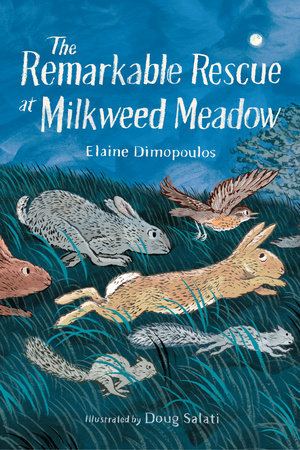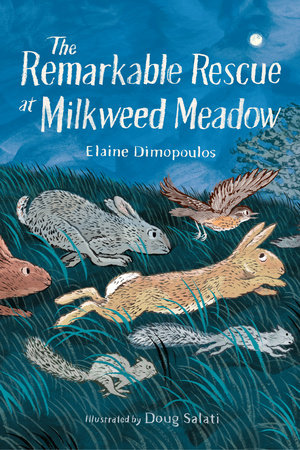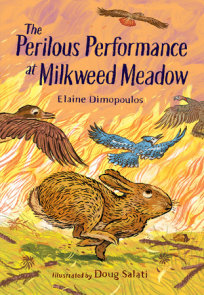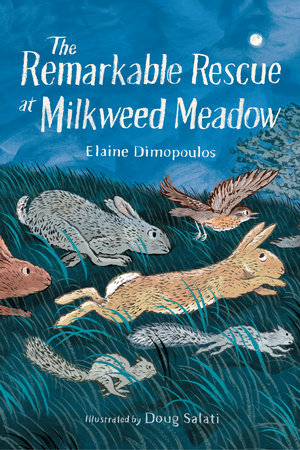

The Remarkable Rescue at Milkweed Meadow
By Elaine Dimopoulos
Illustrated by Doug Salati
By Elaine Dimopoulos
Illustrated by Doug Salati
By Elaine Dimopoulos
Illustrated by Doug Salati
By Elaine Dimopoulos
Illustrated by Doug Salati
By Elaine Dimopoulos
Illustrated by Doug Salati
By Elaine Dimopoulos
Illustrated by Doug Salati

-
$10.99
Oct 01, 2024 | ISBN 9781623545857 | 8-11 years
-
$17.99
May 16, 2023 | ISBN 9781623543334 | 8-11 years
-
May 16, 2023 | ISBN 9781632893062 | 8-11 years
YOU MAY ALSO LIKE
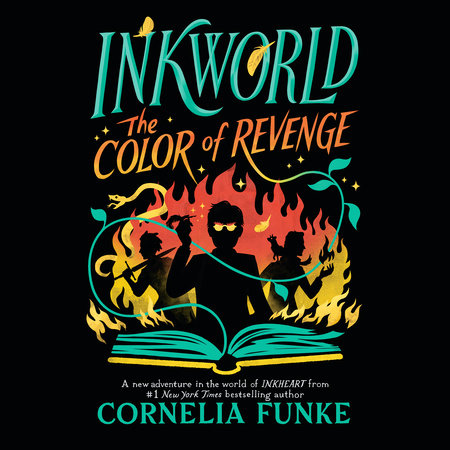
Inkworld: The Color of Revenge
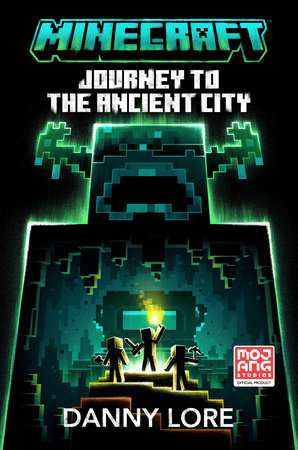
Minecraft: Journey to the Ancient City
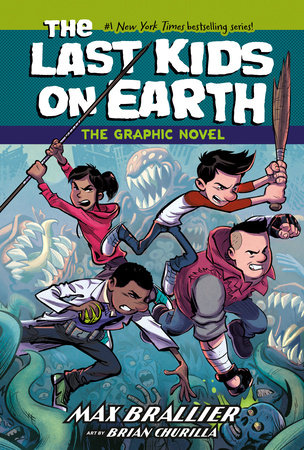
The Last Kids on Earth: The Graphic Novel
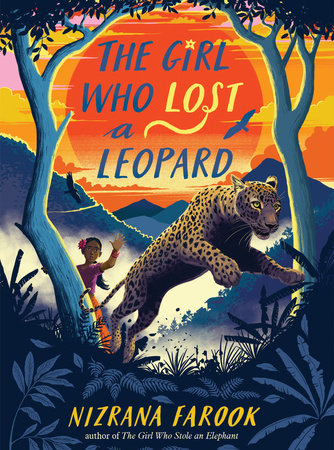
The Girl Who Lost a Leopard
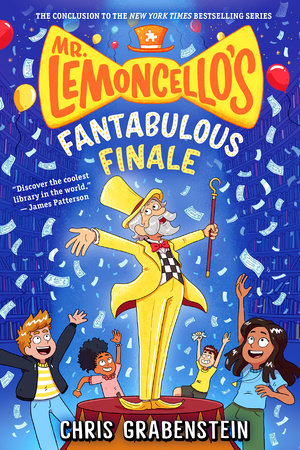
Mr. Lemoncello’s Fantabulous Finale
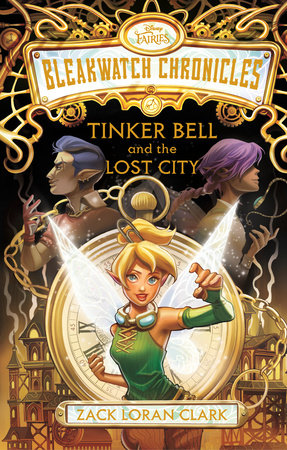
Bleakwatch Chronicles: Tinker Bell and the Lost City

Sonic the Hedgehog: Official Movie Novelizations
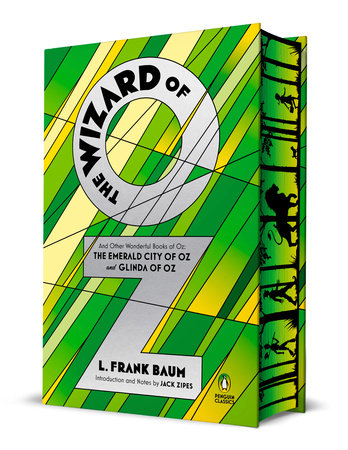
The Wizard of Oz
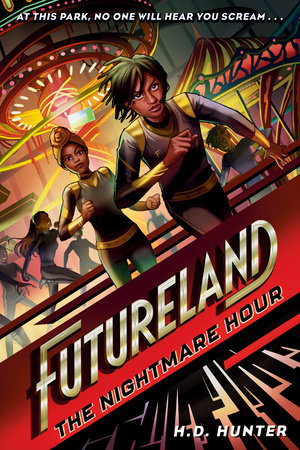
Futureland: The Nightmare Hour
Praise
A wild rabbit narrates a tale of friendship, bravery—and storytelling.
Young Butternut and her siblings receive an in-depth education from their mother, who in turn learned from Butternut’s grandmother Sage, a wise, experienced rabbit who’s determined to keep her family safe. Humor shines through as Butternut describes lessons in survival, storytelling, and grooming. Grandmother tells the younger rabbits that just as monarch butterflies have the advantage of eating milkweed (which makes them toxic and keeps them safe from predators), “Our milkweed is our brain power.” Despite her family’s misgivings, Butternut—known for her “brambles” (or anxiety) and storytelling prowess—befriends Piper, a baby robin who enjoys using alliteration. The duo soon start venturing out at night to help an injured fawn, and more adventures ensue as Butternut slowly learns that there are some things in life worth taking risks for. By the time of the titular rescue, a host of secondary characters have been introduced, including a bullying blue jay and a “little female human.” Cleverly, the text uses Butternut’s voice to point out literary devices and techniques as she tells her tale. Witty, engaging, and heartfelt, this novel compares favorably with Cynthia Voigt’s gray squirrel odyssey, Toaff’s Way (2018), expertly entwining actual, observed facts about wildlife with whimsical anthropomorphism. The charming illustrations complement the text and show the girl to be light-skinned.
Use your milkweed: Read this!
—Kirkus Reviews, starred review
An anxious young rabbit with a gift for storytelling narrates this intimately voiced, community-centered novel by Dimopoulos (Turn the Tide), which explores the value of crossing species lines and the bravery required to live in the world. When a birdseed-controlling blue jay eats a robin’s egg in an act of retribution, Milkweed Meadow’s young bunnies—taught to “stay alive” via brainpower and rigid rules—are told to “worry about the burrow-dwellers only.” But young Butternut, an anxious rabbit who thrills at the stories recounted in her family’s root room, wonders about the event’s communal and long-term effects. Butternut soon meets a gregarious, newly fledged robin named Piper, and they encounter and befriend an injured fawn, acts that eventually lead to a cooperative rescue of creatures in dire need. As Butternut’s world grows larger (“I’d performed a feat of athleticism. I’d met a young robin that spoke like an old poet”), her action-packed adventures with Piper underline the way that a survivalist mentality can come at the cost of a compassionate, connected, meaningful life. Occasional illustrations by Salati (Hot Dog), in graphite and gouache, elegantly depict wildlife scenes. Ages 8–11.
—Publishers Weekly, starred review
Members of the latest litter of rabbits in Milkweed Meadow have been brought up with strict instructions to only commune with their own kind. Grandmother Sage survived a harrowing ordeal when she was young, and she’s raised inhabitants of the warren to prize their smarts and storytelling, which help them survive in a dangerous world. Butternut is a particularly anxious bunny (she refers to her worried thoughts as “mind brambles”), but she quietly begins to take risks when they are in service to other creatures, even befriending other neighborhood animals, including a chatty robin and an injured fawn. But Butternut is soon faced with a nearly impossible decision when a life is on the line: follow her upbringing and make the rational choice or risk her life with the compassionate one. The sparkling story is both terrifically funny and quietly contemplative, touching on heavy topics with a light hand and heaps of humor. Butternut narrates the proceedings at a brisk pace, and the occasional black-and-white graphite-and-gouache illustrations add appealing visual interest. The author has created a beautifully realized natural setting, and the story takes time to celebrate the joy in existence without shying away from some sobering realities of living as a wild creature. A marvelous reminder of the power in stories and the thrill in determining one’s own destiny.
—Booklist, starred review
“Bird affairs are not rabbit affairs,” says Butternut’s mother. But when the young rabbit meets Piper, and outgoing and adventurous fledgling robin, she starts connecting with other animals in Milkweed Meadow and finding the world less frightening. Butternut directly addresses readers, dropping carrots of wisdom about story structure and life. “Life-and-death stakes might enhance a story, but they were terrifying to live through.” The animal characters are anthropomorphized, but they retain core species characteristics and behaviors; some readers may even recognize the dynamics of wildlife interactions around the bird feeder near Butternut’s den. Salati’s (Hot Dog, rev. 11/22) textured black-and-white illustrations mirror this blend of realism and fantasy. The animals’ faces are expressive, but they look like animals, especially in their body language. When Butternut has to decide whether or not to risk her safety to attempt the rescue she’s been foreshadowing since the first sentence of chapter one, no one will be surprised. But how it happens is “a wood-gnawing climax,” as Butternut’s grandmother would say. This chapter book has a relatively rare and welcome level of depth, and the strong narrative voice, ecological awareness, and themes around the value of connection and community will call to many readers.
—The Horn Book
It’s a big, scary world for young Butternut the bunny, who lives with her family in the burrows of idyllic Milkweed Meadow. Under the cautios head of the family, Grandmother Sage, Butternut’s family lives a careful life isolated from other animals. Each night in the burrow, family members take turns sharing stories; Butternut’s are the best. So it’s a bitter pill for her when a brave excursion results in her mother and grandmother forbidding her to share the tale. But Butternut makes new stories and shares them with listeners outside of the rabbit family. She finds friends in the other meadow-dwellers and realizes she might be braver than she thought—maybe brave enough to pull off a remarkable rescue. This enchanting animal adventure is made up of a series of interconnected short stories. In a beautiful narrative voice, and brought to life by Salati’s charming black-and-white illustrations, Butternut describes her own storytelling process. Younger and still developing readers could find this one too challenging to be an independent read. VERDICT Sure to hold appeal to the animal lovers, this would make an excellent read-aloud, especially if the audience is working on learning the elements of storytelling.
—School Library Journal
Illustrated with Doug Salati’s graphite and gouache illustrations, The Remarkable Rescue at Milkweed Meadow by Elaine Dimopoulos is short and sweet. It is, at its heart, a story about storytelling. Butternut, a young rabbit from a family of storytellers, draws the reader’s attention to various literary devices throughout her narration. You know from the beginning that there is going to be a rescue, but you don’t know when, who, or how until the very end. Butternut reassures you along the way, though, that it is coming and that it is going to be big.
The rescue, while big and surprising, is only a small part of the story. The larger focus of the story is Butternut’s experience creating a community with those outside of her small, safe family. While Butternut sometimes struggles with “brambles” (anxious thoughts) and is taught that her main goal is to “stay alive,” she finds herself wandering away from her home one day and meeting a baby robin. This brave and outgoing fledgling continually pushes Butternut outside her comfort zone, showing her there is much more to discover out there in the meadow (and woods) when she is willing to leave the safety of her family burrow.
Butternut has been raised with the understanding that everything and everyone that is not a rabbit is a threat. Throughout the story, she challenges this. She slowly becomes part of a larger community, learning that just because someone is different does not mean they are dangerous. In fact, a found and chosen family can be just as strong as the family you are born into, and just as important. This message, especially for anxious children growing up in an increasingly divisive world, is the part of the story that most resonated with me. Elaine Dimopoulos weaves this message into a fun, adventurous story that children will love, with a main character that everyone will be rooting for. I look forward to the sequel, The Perilous Performance at Milkweed Meadow.
—Friends Journal
Of all the creatures in Milkweed Meadow, the most gifted storyteller is Butternut. She’s one of nine rabbit siblings and by far the most anxious of the bunch. With “brambles” of disaster scenarios running wild through her mind, Butternut knows she has to use her intelligence—what her protective grandmother calls her “milkweed”—to survive in a world where she could be attacked by dangerous predators.
Butternut, however, can’t stop thinking about the creatures in the world around her and how their lives affect one another. When she tries to help some squirrels in need, a rascally blue jay steals one of her warren’s treasures, and Butternut’s defensive brambles momentarily disappear in a fit of fury. Although she considers herself a coward, Butternut climbs a fence and steals the treasure back, and along the way makes friends with a robin fledgling.
As other creatures in the meadow begin to listen to her stories, Butternut finds herself questioning some of her grandmother’s advice and begins to build interspecies bonds despite the prejudices of her family—and the families of her new friends. And when disaster strikes, she must put aside what she’s been told in order to do what she knows is right.
With charming black-and-white illustrations from Caldecott Medalist Doug Salati (Hot Dog), Elaine Dimopoulos’ middle grade novel reckons with the realistic challenges of an untamed animal’s life while preserving the magic of wilderness. Butternut narrates the cozy woodland story with cheeky asides to the reader about how stories work: how she’s going to hold some information to build tension, and how she hopes you’ll love her cast of characters. Ultimately, readers will be left with the impression that, if they can be brave and put aside their stigmas, they too can have an adventure worthy of an audience the size of a meadow.
Young readers who squirm when bad things happen to animals will need to avoid this one: The novel starts with a blue jay stealing and eating a robin’s egg, and later, a car strikes a young mother coyote and leaves her pups orphaned. Children who understand the risky truths of living wild, however, The Remarkable Rescue at Milkweed Meadow will be left with a deep desire to become wildlife rehabilitators—and maybe convince their parents to start on that journey too.
—BookPage
Awards
Bank Street College Best Children’s Book of the Year SELECTION 2023
Junior Library Guild Selection SELECTION 2023
Notable Children’s Books in the Language Arts SELECTION 2024
Massachusetts Book Award HONOR 2024
ALA Notable Children’s Book AWARD 2024
Booklist Editor’s Choice AWARD 2023
Kirkus Reviews Best Book of the Year AWARD 2023
Oklahoma Sequoyah Children’s Book Master List AWARD 2025
21 Books You’ve Been Meaning to Read
Just for joining you’ll get personalized recommendations on your dashboard daily and features only for members.
Find Out More Join Now Sign In






